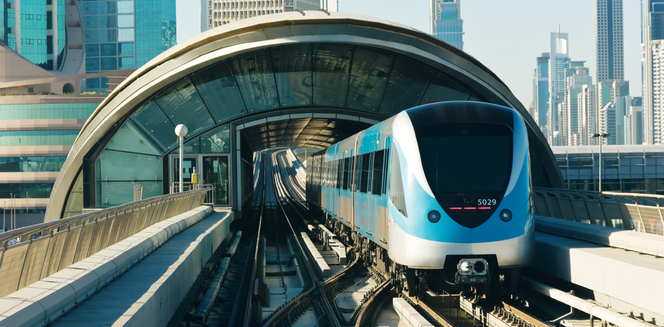How Autonomous Train Technology Has Become Successful in Offering Greater Flexibility to Passengers

9 Oct
2019
In your childhood, you must have fantasized about trains or cabs that run automatically- without any manpower on board. And, today’s high-end advancement of technology has made this possible indeed. The autonomous train technology has now given birth to a new kind of transport network. When rail has made significant advances in the development of driverless vehicles, autonomous trains have appeared as nothing but a bliss.
Autonomous train comes with exclusive energy-efficient properties and the better renewal of energy during braking makes it more sustainable than that of its conventional counterparts. Also, right from air conditioning systems to LED lighting, each coach comes with high-end features that don’t let the train fall short in any aspect. The size of the LCD screens tends to vary from eighteen to twenty inches, displaying important commercials on a continuous note. Also, fiber seats have newly been introduced to add more color to the trains.
When it comes to semi-automatic trains, they still require a driver to be on board. Although most of the features are automatic, but the presence of a human operator is always needed to take care of services like checking tickets, handling customer service, controlling any emergency situation etc. Â On the other hand, autonomous trains happen to run automatically with no human resource on duty. All the important operations are perfectly controlled and supervised by a plethora of remote technologies such as CCTV surveillance, automatic detection systems and many more. A control center keeps an eye on these smart lines and monitors if there are any potential hazards on board.
The main benefits of autonomous trains are as follows:
- Autonomous train technology can significantly pile up the number of trains. While curtailing down the total fleet size, it also keeps the potential to bring up capacity not just on the trains but on the routes as well. Â
- Autonomous trains cut back on energy consumption to a significant extent for a given time by regulating the speed. Â Accordingly, it paves the way for passenger comfort too.
- Last but not the least; automatic trains offer greater flexibility of the timetable, letting train frequencies serve the demand for both peak and off-peak times. Ultimately, it ends up providing a much better service to the passengers and drives a steep rise in the number of commuters.
According to Allied Market Research, the global autonomous train technology market is expected to grow at a significant CAGR from 2019–2026. Rise in the allocation of budget for expansion of railways, surge in demand for high-end transport system and reduction in prevalence of accidents are the major factors driving the growth of the market. On the other hand, high cost levied in train automation is expected to restrain the growth to certain extent. Nevertheless, development in railway infrastructure over the time and rise in freight transport through train have almost downplayed the restraining factor and paved the way for a number of prospects in the future. To sum up, it can be stated that the market is growing quite profoundly and it’s projected to thrive yet more in the next few years.Â
Reference:
future-markets-magazine.com

Koyel Ghosh
Author’s Bio- Koyel Ghosh is a blogger with a strong passion and enjoys writing in miscellaneous domains, as she believes it lets her explore a wide variety of niches. She has an innate interest in creativity and enjoys experimenting with different writing styles. A writer who never stops imagining, she has been serving the corporate industry for the last five years.
Avenue: Entire Library membership of Allied Market Research Reports at your disposal
- Avenue is an innovative subscription-based online report database.
- Avail an online access to the entire library of syndicated reports on more than 2,000 niche industries and company profiles on more than 12,000 firms across 11 domains.
- A cost-effective model tailored for entrepreneurs, investors, and students & researchers at universities.
- Request customizations, suggest new reports, and avail analyst support as per your requirements.
- Get an access to the library of reports at any time from any device and anywhere.
Related Post
-
How are Submarine Cables Transforming Global Connectivity with Enhanced User Experience?
-
Endoscopy Procedures: Transformations in Techniques and Applications
-
AI-Powered Video Analytics: How the Product Actually Works for enterprises
-
Painting Robots: Transforming Precision Coating and Creative Applications
-
Innovations in Pharmacovigilance Systems Advancing Patient Safety
-
Understanding Edge Security: Keeping Data Safe Near the Source
-
Exploring the Use and Advancements of 3D Laser Scanners in Professional Applications
-
Reinforcing Industrial Controls with Smarter Tools and Training








